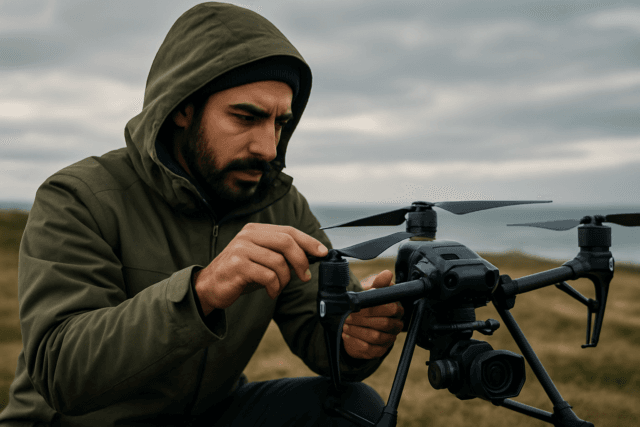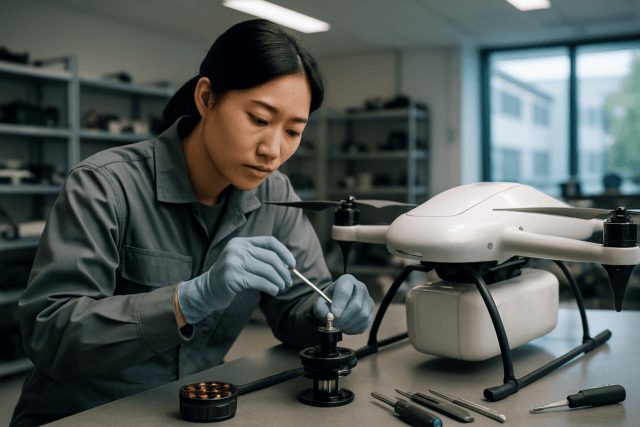Imagine a world where a drone seamlessly picks up a package in one country and delivers it to a recipient in another, effortlessly crossing national borders. While drone delivery promises unparalleled speed, efficiency, and reduced carbon footprints, realizing this vision on an international scale is currently hampered by a complex web of regulatory hurdles. From fragmented airspace laws to varying privacy standards and intricate customs procedures, the path to widespread cross-border drone delivery is fraught with challenges that require significant international cooperation and standardization.
The Patchwork of National Airspace Regulations
One of the most significant obstacles to international drone delivery is the lack of a unified global regulatory framework for unmanned aerial vehicles (UAVs). Each country typically has its own civil aviation authority that governs drone operations, leading to a “patchwork” of disparate rules and guidelines.
Divergent Flight Rules and Operational Limitations
National regulations often dictate maximum flight altitudes, impose no-fly zones, and specify operational limitations such as daylight-only flights or restrictions on flying over people or populated areas. For example, the Federal Aviation Administration (FAA) in the U.S. and the European Union Aviation Safety Agency (EASA) in Europe have established frameworks, but even within the EU, individual member states can set additional requirements. Canada also has its own distinct regulations overseen by Transport Canada. This inconsistency creates a compliance nightmare for companies aiming to operate across multiple jurisdictions, often requiring them to obtain multiple permits and adhere to varying standards.
Beyond Visual Line of Sight (BVLOS) Operations
For efficient drone delivery, especially over long distances or across borders, Beyond Visual Line of Sight (BVLOS) operations are crucial. However, many current regulations worldwide primarily permit operations only within the pilot’s visual line of sight (VLOS). Obtaining waivers or new regulations for BVLOS is a lengthy and complex process, as these operations require advanced safety standards and sophisticated traffic management systems to ensure safe integration with manned aircraft. Efforts like the EU’s U-space initiative aim to create dedicated airspace for drones to enable more complex and longer-distance operations, including BVLOS, by 2030.
Pilot Certification and Drone Registration Discrepancies
Operating a drone, particularly for commercial purposes, requires specific certifications for pilots and registration for the aircraft. These requirements vary significantly from country to country.
Inconsistent Pilot Licensing and Training
To fly commercially in the U.S., operators need a Remote Pilot Certificate under FAA Part 107. In the EU, EASA’s framework categorizes drones by risk levels, with different certification requirements for pilots. Some EU member states also have additional national restrictions and privacy laws. The varying exams, age requirements, and competency tests across different nations add layers of complexity for international operators.
Fragmented Drone Registration and Identification
Most countries require commercial drones to be registered with their respective aviation authorities. However, the specific weight thresholds for registration, the validity periods, and the implementation of remote identification technologies (which allow drones to be identified remotely during flight) differ. This lack of universal standards for drone registration and identification can complicate tracking and enforcement for cross-border flights.
Customs and Cross-Border Trade Regulations
International drone delivery inherently involves the movement of goods across sovereign borders, triggering a host of customs, import, and export control challenges.
Complex Customs Procedures
Drones, and the goods they carry, must comply with the customs regulations of both the originating and destination countries. This includes declarations, tariffs, duties, and inspections, which can vary widely depending on the type of drone and the cargo. The World Customs Organization (WCO) has identified that drones can fall under different Harmonized System (HS) codes, impacting import tariff rates and trade regulations.
Export Controls for Dual-Use Technology
Many drones are considered “dual-use” items, meaning they have both commercial and potential military applications. This classification subjects them to stringent export control regulations, such as the U.S. Export Administration Regulations (EAR) and the International Traffic in Arms Regulations (ITAR). Exporting or even providing foreign nationals access to certain drone technologies may require specific licenses and authorizations, a process that can be lengthy and complex.
Safety and Security Concerns
Ensuring safety and security is paramount for integrating drones into shared international airspace and protecting populations on the ground.
Airworthiness Standards and Collision Avoidance
The safety of drone operations, especially those beyond visual line of sight and at low altitudes, demands robust airworthiness certification and effective collision avoidance systems. There is a pressing need for sophisticated traffic management systems for UAVs (often referred to as Unmanned Aircraft System Traffic Management or UTM) to safely integrate a growing number of drones with traditional manned aircraft.
Cybersecurity and Malicious Use
Drones can pose significant security risks, particularly in sensitive areas like borders and critical infrastructure. Concerns include unauthorized surveillance, smuggling contraband, and potential kinetic attacks. Ensuring secure communication protocols and preventing unauthorized access or hacking of delivery drones are vital to mitigate these threats. Counter-UAS (C-UAS) solutions are being developed to detect and neutralize rogue drones, highlighting the ongoing battle against malicious drone activities.
Privacy and Data Protection Issues
The deployment of camera-equipped drones for delivery raises substantial privacy concerns across borders.
Surveillance Fears and Data Collection
Drones flying over residential areas can inadvertently or deliberately capture images and videos of individuals and private properties without consent, leading to fears of widespread surveillance and intrusion into personal spaces. Different countries have varying privacy laws, making it challenging for operators to ensure compliance across borders regarding data collection, storage, and usage. Transparency in data handling practices is crucial to build public trust.
Varying Privacy Legislation
The legal landscape for privacy and data protection is diverse, ranging from comprehensive frameworks like Europe’s General Data Protection Regulation (GDPR) to a patchwork of sectoral and state laws in other jurisdictions. Harmonizing these disparate privacy laws for international drone operations is a significant challenge.
The Path Forward: Harmonization and Cooperation
Despite these numerous hurdles, international bodies like the International Civil Aviation Organization (ICAO) are actively working towards harmonizing drone regulations by providing guidance and recommendations to member states. Regional efforts, such as EASA’s unified framework within the EU, demonstrate progress towards reducing operational barriers for cross-border operations.
The future of international drone delivery hinges on continued collaboration between governments, aviation authorities, industry stakeholders, and research institutions. This collaboration is essential to:
- Develop standardized regulatory frameworks for airspace management, pilot certification, and drone registration.
- Establish consistent safety and airworthiness standards for BVLOS and international operations.
- Streamline customs procedures and address export control complexities for drones and their cargo.
- Implement robust cybersecurity measures and counter-drone technologies.
- Harmonize privacy and data protection laws to safeguard individual rights across borders.
By addressing these multifaceted regulatory challenges through a concerted global effort, the transformative potential of international drone delivery can eventually be fully realized, reshaping logistics and supply chains worldwide.





